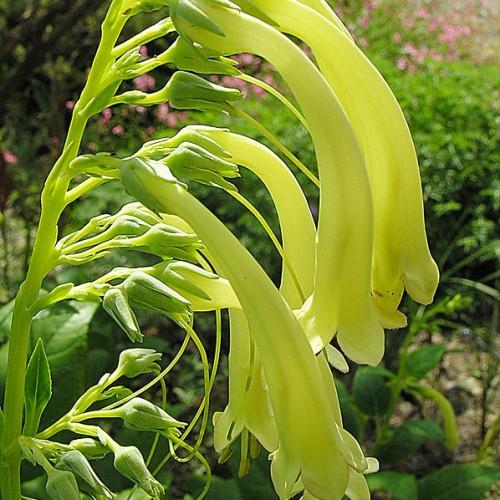
phygelius
Phygelius aequalis
Cycle:
Herbaceous Perennial
Watering:
Average
Hardiness Zone:
7 - 9
Flowers:
Flowers
Sun:
Full sun,part shade
Leaf:
Yes
Growth Rate:
Low
Maintenance:
Moderate
Drought Tolerant:
Yes
Salt Tolerant:
Yes
watering
The amount and frequency of watering a phygelius will depend on the region where the plant is located and the time of year. Generally, the plant should be watered once or twice a week in the spring and summer months, and once every 2 weeks in the fall and winter. The soil should be checked first, and if it is dry to the touch, the plant should be watered until the soil is damp. If the soil is too wet, the plant will be adversely affected and may develop root rot. Once the soil has been watered, the excess water should be allowed to drain away. Additionally,ensuring good drainage will help to prevent the plant from becoming waterlogged.
sunlight
Phygelius (Phygelius aequalis) is a plant species that thrives in partial and full sunlight. It requires at least 4 to 6 hours of direct sunlight on a daily basis, or at least 6 hours of mild, indirect sunlight throughout the day for optimal growth and flower production. When planting, it is important to site it in a spot that receives direct morning sunlight with some relief from afternoon sun and heat. Too much direct, intense sunlight can damage the foliage, particularly in hotter parts of the country. If planted in an area with low light levels, Phygelius may not develop as well or not produce flowers at all.
pruning
Phygelius aequalis should be pruned twice a year - once in the spring and again in the fall just after flowering has finished. In the spring, remove the old, woody stems that are sticking up in the center of the plant and shorten the newer, healthier shoots to encourage more growth. In the fall, cut the stems back to about 4 to 6 inches above the ground. This will encourage vigorous new growth the following spring. In general, try to keep the shrub neat and tidy by removing any wayward, spindly stems that could detract from the overall shape of the plant.
